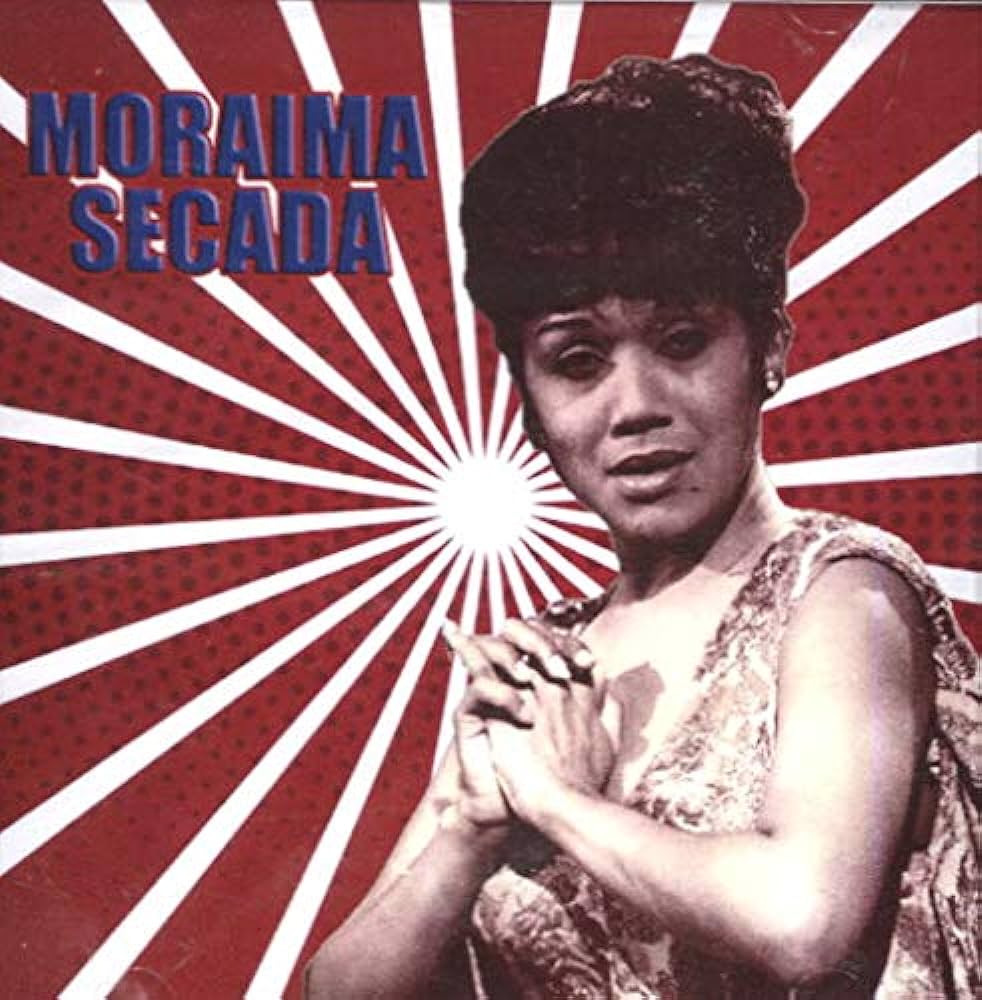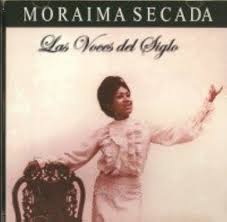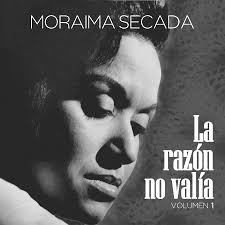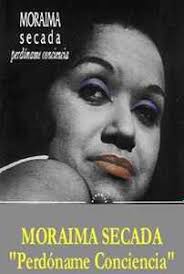
MORAIMA SECADA, CANTANTE CUBANA DE ESTATURA UNIVERSAL Y ESPECIAL ESTILO DE INTERPRETACIÓN. FOTOS.
Moraima Secada nacida María Micaela Secada Ramos el 10 de septiembre de 1930, conocida por sus admiradores como La Mora (la mora), fue una cantante temperamental que creó un estilo de interpretación especial dentro del género musical cubano del filin (sentimiento).
Un artista cubano de talla universal. La historia de esta mujer es un ejemplo de esfuerzo, pasión, aventura y triunfo. Moraima Secada fue una cantante temperamental que creó un estilo de interpretación especial dentro de la cultura cubana, un género musical de filin (sentimiento).
Moraima empezó a trabajar como planchadora. Pero esta joven tenía un sueño, ser cantante. Tuvo la suerte de ingresar al programa radial La Corte Suprema del Arte, de la emisora CMQ. Fue premiada por su calidad vocal y de esta manera se inició en el mundo de la música.
CARRERA ARTÍSTICA
Empezó a cantar ocasionalmente en algunos cabarets y lugares públicos. En 1950, a los 20 años, pasó a formar parte de la Orquesta Anacaona, una de las agrupaciones femeninas más importantes de la música popular cubana que realizó numerosas giras internacionales.
El 16 de agosto de 1952 Aida Diestro fundó el Cuarteto Las D’Aida, del que actuó como directora. El grupo fue una escuela para sus integrantes que llegaron a ser las mejores solistas de Cuba: Omara Portuondo, Moraima Secada y Elena Burke. Moraima fue la segunda voz de este grupo. Permaneció así durante los primeros años de su carrera. Luego pasó al cuarteto Meme Solís y en los años 1960 inició su carrera solista.
Su voz y la transmisión del mensaje de sus canciones en el escenario atraían a un gran público allá donde actuaba. Alcanzó un éxito inmediato en su carrera profesional y se destacó entre las principales voces del bolero y la canción en Cuba.
Moraima Secada era una mujer de temperamento fuerte y desinhibido. Se mostró sin miedo, abrió su corazón en cada show y su público lo notó. Se dice que una de sus canciones más icónicas en este sentido fue su interpretación de “Perdóname la conciencia”.
Moraima Secada grabó un disco con el Cuarteto Meme Solís y dos LP con la EGREM durante su carrera solista. Además, colaboró con otras formaciones como la Orquesta Aragón. A pesar de tener pocas canciones grabadas, consiguió un lugar en la música cubana.
Era apasionada, intolerante y sincera, lo que le trajo no pocas desavenencias en los años 70 y 80 en Cuba.
En “Perdóname Conciencia”, de Piloto y Vera, fue su tema el que la inmortalizó. Entre tantas canciones, fue esta que popularmente se conoce como “La razón no valió” la que cautivó el corazón de su público, tal vez porque todos alguna vez hemos silenciado nuestra conciencia ante el amor.
Moraima, esta figura del filin es, sin embargo, casi desconocida entre las jóvenes generaciones cubanas.
Murió en La Habana el 30 de diciembre de 1984.
Moraima también era tía del distinguido cantante cubano Jon Secada.


MORAIMA SECADA, CUBAN SINGER OF UNIVERSAL STATURE OF SPECIAL STYLE OF INTERPRETATION. PHOTOS.
Moraima Secada born María Micaela Secada Ramos on September 10, 1930, was known to her admirers as La Mora (the moor), was a temperamental singer who created a special style of interpretation within the Cuban music genre of filin (feeling).

A Cuban artist of universal stature. The story of this woman is an example of effort, passion, adventure, and triumph. Moraima Secada was a temperamental singer who created a special style of interpretation within Cuban culture, a musical genre of filin (feeling).
Born María Micaela Secada Ramos on December 10, 1930, she was also nicknamed La Mora by her admirers.
Moraima started working as an ironer. But this young woman had a dream, to be a singer. She was lucky enough to enter the radio program La Corte Suprema del Arte, on the CMQ station. She was awarded for her vocal quality and in this way she started in the world of music.
ARTISTIC CAREER
She started singing occasionally in some cabarets and public places. In 1950, at the age of 20, she became part of the Anacaona Orchestra, one of the most important female groups in Cuban popular music that made numerous international tours.
On August 16, 1952, Aida Diestro founded the Cuarteto Las D’ Aida, in which she acted as director. The group was a school for its members who became the best soloists in Cuba: Omara Portuondo, Moraima Secada, and Elena Burke. Moraima was the second voice in this group. She stayed with it for the first few years of her career. She then moved on to the Meme Solís quartet and in the 1960s she began her solo career.
Her voice and the transmission of the message of her songs on stage attracted a large audience wherever she performed. She achieved immediate success in her professional career and she stood out among the leading voices of bolero and song in Cuba.
Moraima Secada was a woman with a strong and uninhibited temperament. She showed herself without fear, she opened her heart in each show and her audience noticed it. It is said that one of the most iconic songs of hers in this sense was her interpretation of “Forgive me conscience.”
Moraima Secada recorded one album with the Meme Solís Quartet and two LPs with EGREM during her solo career. In addition, she collaborated with other groups such as the Orquesta Aragón. Despite having few songs recorded, she got a place in Cuban music.
She was passionate, intolerant, and sincere, which brought her not a few disagreements in the ’70s and ’80s in Cuba.
In “Perdóname Conciencia”, by Piloto y Vera, it was her theme that immortalized her. Among so many songs, it was this one that is popularly known as “The reason was not worth” the one that captivated the hearts of her audience, perhaps because we have all once silenced our conscience in the face of love.
Moraima, this figure of the filin is, however, almost unknown among the young Cuban generations.
She died in Havana on December 30, 1984.
Moraima was also the aunt of the distinguished Cuban singer Jon Secada.

Agencies/ Wiki/ MoraimaSecadaBio./ Extractos/ Excerpts/ Internet Photos/ Arnoldo Varona/ www.TheCubanHistory.com

THE CUBAN HISTORY, HOLLYWOOD.



 MORAIMA SECADA, Cantante Cubana de estatura Universal y especial estilo de Interpretación. FOTOS. * MORAIME SECADA, Cuban Singer of Universal Stature of special style of interpretation. Photos.
MORAIMA SECADA, Cantante Cubana de estatura Universal y especial estilo de Interpretación. FOTOS. * MORAIME SECADA, Cuban Singer of Universal Stature of special style of interpretation. Photos.